Erica Vetsch's Blog, page 128
September 25, 2018
International Travel Tips for Writers!

By Debby Giusti
One week ago today, I was sitting in the Dublin Airport, praying that my flight home to Atlanta would take off. Gale force winds had shut down the airport and the flight crew had only an hour or so left before they timed out, which meant they wouldn’t be able to fly until the next day. My husband and I, along with our tour group, had gotten up at 4:45 AM and bused to the airport for two lengthy security screens, one from the Irish authorities and the other from the US folks. The two countries have an agreement where US citizens go through customs and dual security screenings before boarding their planes…all of which took three hours of standing in lines and navigating security. The thought of having to find lodging for the night and then retrace our steps the next day through security and customs made us eager for the wind to die down and the plane to take off. A few of us on the same Shades of Ireland tour gathered in a fairly private spot and prayed for just that. As you may have guessed, God answered our prayers. The wind calmed, and we took off with just a few minutes to spare before our crew timed out.
 Saint Patrick's Cathedral, Dublin
Saint Patrick's Cathedral, Dublin Interior of Saint Patrick's Cathedral
Interior of Saint Patrick's Cathedral  A stone that covered the well where
A stone that covered the well whereSaint Patrick baptised so many.
Which brings me to my topic, international travel for writers. If you’re planning to research a foreign setting for your current work in progress or if you’re mulling over the idea of writing a story set outside the United States, an international trip might be in your foreseeable future. I’m not a travel expert or a tour guide, but my husband and I lived in Germany for three years and traveled through most of Europe, usually accompanied by our three young children. We’ve returned to Germany a number of times since then, and for the last eight years, we’ve taken a yearly trip outside the US, with the Emerald Isle being our most recent destination.
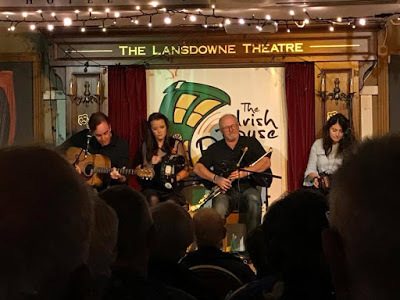 A delightful Celtic quartet entertained us the first night with
A delightful Celtic quartet entertained us the first night withIrish music and dancing. They played old instruments by ear and
were talented and upbeat.
 A lovely eatery in Kilkenny on the River Nore. My maiden
A lovely eatery in Kilkenny on the River Nore. My maidenname was Willoughby so I had to take a photo.
For me, packing is always the biggest challenge. In the month prior to our tour, I checked the weather in Ireland everyday to get an idea of what to expect. In September, Ireland should have been mid- to low-50s in the daytime with drops into the low-40s at night. Also, daily rain showers were forecast, but Mother Nature can be fickle, and we were blessed with warmer than normal temperatures and only a couple light drizzles of rain. Savvy travelers know to layer their clothing, and when traveling in Ireland, expect rain. We had water-proof jackets, umbrellas and ponchos. Vests, cardigan sweaters and light fleece, zipped-front sweatshirts/pullovers provided warmth when needed. We each took two pairs of shoes. I included scarfs to add warmth and color to my outfits.
 Replica of a Viking ship like the ones that first landed in
Replica of a Viking ship like the ones that first landed inWaterford, the oldest city in Ireland.
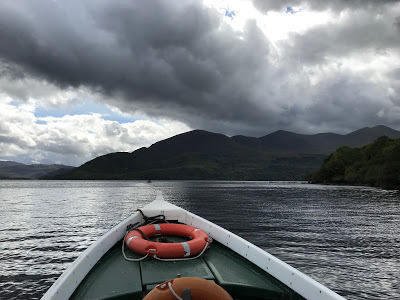 One of three lakes in Killarney National Park in County Kerry.
One of three lakes in Killarney National Park in County Kerry.The park covers 1,750 acres.My husband rolls his clothing, but I pack my things in extra-large zip-locked bags and squeeze out the air so they almost become vacuum sealed. That way the plastic bags can be shuffled around in the suitcase, if I’m looking for something, without wrinkling the clothing. One of my favorite travel gadgets is a hand-held suitcase scale. Most airlines have a 50 pound limit on checked luggage with steep charges for any overages. I always weigh my bag, and if over the limit, I switch heavier items, like shoes, to my carry-on bag.
 Photo of a small Irish town taken from our bus. Winters
Photo of a small Irish town taken from our bus. Wintersare drab and dreary so stores are often painted in
bright colors.
 Ducks on the side of the lake.
Ducks on the side of the lake.Medication should be packed in their original containers for easy identification by TSA and should be kept in carry-on luggage in case your main suitcase goes missing. Larger toiletries can be packed in your shipped luggage, but liquids and gels carried on board the plane must be in no more than 3.4 ounce (100 ml) containers and placed together into one quart-size zip-locked plastic bag that TSA wants to see when you go through security. Knowing luggage can go missing, I always include an extra outfit and sleepwear in my carry-on bag as well as anything I might need for that first overnight stay. Laptops and tablets needed to be placed separately on the security conveyor belt, along with your shoes (don’t forget to wear socks so you don’t have to walk barefoot), jackets, sweaters and outerwear, belts, jewelry, watches and anything in your pockets. I take off my jewelry and watch and place them in my purse before arriving at security.
 Breathtaking scenery as we traveled the Ring of Kerry.
Breathtaking scenery as we traveled the Ring of Kerry.Notice the sheep grazing in the pasture.
 We watched a border collie round up sheep
We watched a border collie round up sheepgrazing on the mountainside. The sheep huddle together in fear
of the collie, thinking she is a wolf.
Our flight to Ireland was more than 8 hours long and over nine hours on our return. My husband and I both had aisle seats across from each other, which provide a bit more leg room. We got up often, drank lots of water and took an aspirin at the start of our trip to help prevent blood clots. Some folks on the tour wore knee-high compression socks to keep their legs from swelling. My physical therapist daughter encouraged us to “pump” our feet frequently to help circulation.
 The rugged Atlantic coast on the Ring of Kerry. We
The rugged Atlantic coast on the Ring of Kerry. Wewatched young boys jump off the cliffs into the frigid
water. A woman, presumably their mother, sat nearby,
eating her lunch.
 Notice the soft sand and clear water of the Atlantic.Whether flying domestic or international, I carry Wet-Wipes and wipe down the seatbelt, arm rests, tray table and television viewing screen. I take my own earbuds so I can enjoy the in-flight music and/or shows even before the flight attendant passes out the complimentary earphones. Eye masks, blankets and pillows are also provided on long flights.
Notice the soft sand and clear water of the Atlantic.Whether flying domestic or international, I carry Wet-Wipes and wipe down the seatbelt, arm rests, tray table and television viewing screen. I take my own earbuds so I can enjoy the in-flight music and/or shows even before the flight attendant passes out the complimentary earphones. Eye masks, blankets and pillows are also provided on long flights. A "jaunty" or carriage ride through the park.
A "jaunty" or carriage ride through the park.Queen Victoria visited Ireland in 1861 and
rode in a "jaunting car." She took the
idea back to England, along with the term,
"Go for a jaunt," which became popular
in Victorian times.International travelers must show their passports frequently in the airport. I have a pouch that hangs around my neck and is large enough for my passport. I wear that neck pouch while flying, and later transfer my passport to a money belt I wear around my waist. This trip, I also used a writer’s conference name badge to carry some cash and credit cards around my neck and kept a change purse in my pocket for coins and smaller bills. FYI, make a copy of the photo page of your passport and give one to someone remaining in the US, give another copy to a traveling companion and keep one in your suitcase in case your passport is stolen. We also made copies of credit card international phone contact numbers.
 An old Franciscan Monastery in Killarney.
An old Franciscan Monastery in Killarney. Saint John's Castle on the far side of the River Shannon,
Saint John's Castle on the far side of the River Shannon,in Limerick.
ATMs are readily available in foreign countries, but a charge for each transaction is added to your withdrawal. US dollars can be exchanged for Euros in foreign banks. The airports have exchange kiosks and most hotels can exchange money, although the rate of exchange is usually not as good as banks provide. I always order foreign currency from my local bank in the US (for a $5 charge) so I don’t have to worry about exchanging money during my travels. Most foreign vendors accept US credit cards for purchases. In years past, an additional fee was added to international transactions, but most credit card companies have discontinued that practice.
 We attended a Medieval Banquet in this
We attended a Medieval Banquet in thisLimerick Castle.
 Guess who was selected to be the
Guess who was selected to be theKing and Queen of Leinster?
Keep all receipts and ask about the country’s VAT tax system. In Ireland, I received a VAT card and had that swiped for each purchase I made so I didn’t have to pay their in-country sales tax. Before flying home, I had to fill out paperwork at the VAT kiosk located at the airport to confirm that I was leaving their country.
 We were fortunate to have good weather when we toured
We were fortunate to have good weather when we touredthe 700-foot-high Cliffs of Moher with cinematic views
of the Atlantic.
When living in Germany, we always traveled on our own. I was the trip planner and navigator—and often the translator—and my husband was the driver. These days, we enjoy going on tours with a group from church. The in-country tour guides provide an abundance of information and are willing to answer additional questions via email long after our tour ends. They also know how to skirt the crowds and get us to our destinations without hassle or frustration. Bell stewards transport the checked luggage to and from the bus, and most times, our rooms are ready upon arrival. Breakfast is included each morning at the hotel. Usually lunch is on-your-own with dinners being a mix of pre-paid and on-your-own. The tour guide offers dining suggestions and reservations if needed.
 The watch tower overlooking the Cliffs of Moher.
The watch tower overlooking the Cliffs of Moher.The day was blustery and cold. I stood in
the open arched doorway to the right and was
nearly blown away.
I take notes in a small composition book when we travel, like the ones I give away at conferences, and then type the information into a computer file when I get home. Photos are a great way to remember where we’ve been, and snapshots of historical markers and informational signs provide added details as well. I also make note of the guide’s speech patterns and colloquial idioms that would add depth to any characters I might create from that particular location for a future story.
 An authentic Irish cottage with thatched roof.
An authentic Irish cottage with thatched roof.Just as in Europe, Ireland and the UK have a 220 volt electrical current so adapters are needed for electronic items. (NOTE: Different countries have different plug configurations.) You can find adapters at various big box stores or luggage shops. I’ve found a good selection at TJ Maxx. For this trip, I bought an adapter with two USB ports so my husband and I could charge our phones at the same time. (BTW, most tour buses have Wi-Fi and charging stations.) Almost all the hotels we stayed at in Ireland had special US sockets in the bathroom marked for “shavers only.” I have a hair dryer that can convert from US to 220 volts/international and use that when I travel, although on this trip the hotels all had hair dryers in the rooms. I charge my iPad and iPhone with an adapter. Small point and shoot cameras use an adapter. If you take a laptop or have a high-tech camera, check with the manufacturer about international usage. A couple of our cheaper adapters didn’t work so I advise taking more than one…just in case.
 A quaint roadside church.
A quaint roadside church.European hotels usually do not provide washcloths, although some of the hotels in Ireland did. Each room had a hot water pot to make coffee. One room had an espresso machine. Warming racks dry the towels in the bathrooms. Be careful, the pipes get very hot. Often the showers only had a partial glass “curtain” and the floors were slippery when wet. Toilettes have a dual flush system, one button for “light” needs and a stronger flush for “heavier” needs. Some of the bathrooms in various tourist areas had unisex stalls with men and women sharing the same facilities.
 So many spectacular views as we traveled across Ireland.
So many spectacular views as we traveled across Ireland.We could drink the water in Ireland and had no restrictions on any food items…and the food was delicious. Lots of wonderful fish; salmon is one of their staples. The typical breakfasts included eggs, country ham that they call bacon, sausage, blood pudding, mushrooms, baked tomatoes, sometimes salad, fruit, yogurt, and breads and rolls. We opted for light lunches and often had homemade soup--my favorite was the seafood chowder—served with brown bread. Dinner was always a beautifully served three- or four-course meal, consisting of soup or salad and bread, a main course of meat, potatoes and vegetables, and dessert.
 Blarney Castle. We weren't able to
Blarney Castle. We weren't able tokiss the Blarney Stone due to the
long line of tourists and the two hour wait to
climb to the top of the castle. Folklore claims
that being in close proximity to the stone
provides the gift of eloquence even to those
who are unable to kiss the stone.
Before traveling out of the US, notify your credit card company about your travel dates and destination. Check with your phone service about international plans. My AT&T provider offered a $10/day international package with unlimited text and phone calls and charges accrued only on the days used. I took that plan, but never used it and relied instead on “Whats App,” a free download that provides free phone calls, face time and text, including sending pictures, to anyone, anywhere in the world as long as they are in the system. My family members downloaded “Whats App” onto their phones, and we talked each day. I sent photos via text and noted where we were and what we had seen, which provided a running commentary of our travels. The only restriction was that my phone had to be hooked into Wi-Fi before I could call or send texts.
 We spent our last night at Cabra Castle, in Kingscourt.
We spent our last night at Cabra Castle, in Kingscourt.The castle dates back to 1760 and is surrounded by
88 acres of gardens and parkland.
 One of the dining rooms in Cabra Castle.I am so grateful to have been able to tour Ireland. The people were warm and welcoming, and the countryside was breathtakingly beautiful. International travel is exciting and educational, especially for writers researching various foreign destinations. If Ireland is on your bucket list, I hope the information I provided might be of help when you travel to the Emerald Isle or any another international destination. Please add your own travel tips or ask any questions that I might not have covered. Leave a comment to be entered in a drawing for Amish Christmas Secrets, the fourth and final book in my Amish Protectors series. Interestingly, there is an Amish community in Waterford, Ireland, that we didn't get to visit. We did see a Mennonite family in the Dublin airport.
One of the dining rooms in Cabra Castle.I am so grateful to have been able to tour Ireland. The people were warm and welcoming, and the countryside was breathtakingly beautiful. International travel is exciting and educational, especially for writers researching various foreign destinations. If Ireland is on your bucket list, I hope the information I provided might be of help when you travel to the Emerald Isle or any another international destination. Please add your own travel tips or ask any questions that I might not have covered. Leave a comment to be entered in a drawing for Amish Christmas Secrets, the fourth and final book in my Amish Protectors series. Interestingly, there is an Amish community in Waterford, Ireland, that we didn't get to visit. We did see a Mennonite family in the Dublin airport. So many castles dot the countryside.
So many castles dot the countryside. As they say in Ireland, "May the Lord keep you in His hand and never close His fist too tight."
Happy traveling!
Wishing you abundant blessings,Debby Giustiwww.DebbyGiusti.com
 AMISH CHRISTMAS SECRETSBy Debby Giusti
AMISH CHRISTMAS SECRETSBy Debby GiustiSafe Haven for the HolidaysThe thrilling Amish Protectors conclusionLeaving the nursing home where she works, Rosie Glick’s accostedby a man demanding incriminating evidence her murdered boyfriendstole—until Ezra Stoltz scares him off. Now with a killer dead set onsilencing the Amish single mother, Ezra must hide Rosie and her babyto keep them safe. But can he expose a sinister conspiracy in timeto save the woman he secretly loves?
Pre-order here!
Published on September 25, 2018 21:00
September 23, 2018
How to Write A Great Logline/Elevator Pitch

Hey, gang! Over the past couple of months, we've looked at how to create a one sheet and how to write an author biography. Today I'd like examine how to write a great "Logline" or "Elevator Pitch" as it is sometimes known.
First, let's define terms. A Logline is a SHORT, 30-50ish word description of what your story is about. It's sometimes called an "Elevator Pitch" because you can deliver it in the time it takes you to ride an elevator from one floor to the next (if you are ever in an elevator with an agent or editor or movie producer.
Published on September 23, 2018 21:00
September 21, 2018
Weekend Edition

If you are not familiar with our giveaway rules, take a minute to read them here. It keeps us all happy! All winners should send their name, address, and phone number to claim prizes. Note our new email address and please send your emails to Seekerville2@gmail.com
Monday: Jan Drexler walked us through the creation of her new series on Monday. The winner of the first title in that series, "The Sound of Distant Thunder," is Connie Porter Saunders!!! Congratulations, Connie!
Wednesday: Melanie Dickerson walked us through her plotting genius - a combination of many plotting techniques taught by some of the best in romantic fiction. The winner of an eCopy of her latest release Magnolia Summer, is Lee-Ann B.
Friday: Winnie Griggs offered a detailed discussion on the various functions Secondary Characters can perform in your story using the movie Pirates of the Caribbean as her starting point.

Monday: Erica Vetsch is our blogger today!
Wednesday: Publishers Weekly Bestselling Author, Debby Giusti will share pictures and information about her recent trip to Ireland with emphasis on "International Travel Tips for Writers." Foreign research is best done in person. Find out what Debby has learned from her many trips to foreign destinations. Leave a comment to be entered in the drawing! Friday: Pam Hillman is our blogger today!

WE HAVE A CHRISTY AWARD FINALIST!
We are thrilled to announce that Ruth Logan Herne's February 2018 book "Her Secret Daughter" has been nominated as a Christy Award finalist in the "Short Form" category encompassing novels under 60,000 words, Senior Editor Melissa Endlich, Love Inspired Books, editor. Winners will be named at a gala dinner and awards ceremony held at Lipscomb University in Nashville on November 7th, 2018. Congratulations, Ruthy!

Jan's newest book is available now! Look for it at your favorite bookstore or online retailer!
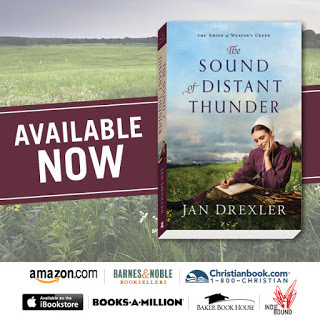
The fourth and final book inDebby Giusti's Amish Protectors series,AMISH CHRISTMAS SECRETSwill release October 1 and can bepre-ordered here.
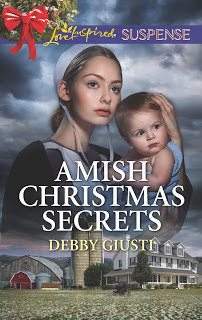
Debby will host a book signing atBooks-A-Million, Peachtree City, GA,on Thursday, OCT 11.Proceeds will benefit The Alzheimer's Association.

Magnolia Summer by Melanie Dickerson is now available for sale! We're celebrating with a social media takeover with JustRead Publicity Tours, starting Thursday, September 27, 2018! Come on by (http://justreadtours.com) and enter the giveaway to win a copy plus an of Mel's previous released titles!

Woman's World Gets a New Editor but Keeps its Sharp Focus by Tony Silber, Forbes
Self-Doubt Is Not Good by Julie Duffy at Writer UnBoxed.
What's Stronger Than Your Character's Fear? Their Unmet Need by Angela Ackerman at Writers In The Storm
R&R: Rants and Raves - Confusing Clauses by Amanda Cabot at An Indie Adventure
Deconstructing Best Sellers in Your Niche Genre by C.S Lakin at Live Write Thrive
The Importance Of Creative Process: 5 Key Conditions To Help You Thrive by Joanna Penn at the Creative Penn
Train Your Eye For Better Writing: 3 Writing Techniques Adapted From The Visual Arts by Tess Callahan at Writers Digest
Published on September 21, 2018 21:01
September 20, 2018
SECONDARY CHARACTERS: The Good, The Bad & The Quirky
 Hi everyone, Winnie Griggs here. Today I want to discuss Secondary Characters.
Hi everyone, Winnie Griggs here. Today I want to discuss Secondary Characters.What would your favorite story be without its secondary characters? You know, those unforgettable personalities that spotlight the story's focal characters, either by helping them shine or presenting daunting obstacles to their goals, or in some cases, creating a quirky contrast for what's happening in the main plot.
What I’d like to do today is draw examples from an oldie-but-goodie movie to illustrate how secondary characters can be used to best effect – the first Pirates Of The Caribbean movie, Curse of the Black Pearl. It’s a fun movie with lots of great characters to draw on for illustrative purposes. Hopefully, most of you have seen it.
Primary Characters, of course, are your protagonsits, those characters who carry the most weight in your story and are its focus.The rest of your cast by definition are your secondary characters. They can be broken down into three categories:Key Secondary Characters: those characters who stand beside or against your Primary Characters, who highlight their flaws and virtues, and who provide the reader with an additional perspective as these Primary Characters struggle to meet their story goal. They are important but their importance stems entirely from their relation to the Primary Characters and to the story journey.Tertiary Characters: your minor characters and bit players who carry much less story weight than your primary or secondary characters. They are usually defined primarily by their context.Window Dressing: Characters who, like furniture, foliage and landscape, are there only to help paint a scene.
So, let’s identify who our primary characters are in POC. Because by definition all of the other characters are Secondary.Some of you may argue that Captain Jack Sparrow is the protagonist. After all, he’s definitely a very strong presence and one of the more memorable characters from the movie. And he does have a compelling story goal and lots of on-screen time.
However, if we think of POC in terms of character and plot arc, we see that this is really Will and Elizabeth’s story. It is they who grow and change over the course of the movie, and it is their determination to save each other that really drives the story forward. Jack, for all of his dash and swagger, is very much the same man at the end of the story as he is at the beginning. And that delegates him to the role of secondary character, albeit a very key one.
In fact the screen writers very carefully set this up. The movie opens with the dramatic first meeting between Elizabeth and Will as children. Then it follows with a scene showing them as adults. This second scene gives us a clear picture of the unspoken attraction crackling between them and the impossible gulf that separates them, namely their very different stations in life. It is only after this is strongly driven home and is clearly fixed in the audience’s mind that we are introduced to the flamboyant Jack.
Regardless of all the other characters’ goals – Jack’s desire to reclaim the Black Pearl, the pirates’ desire to lift the curse, Elizabeth’s father’s desire to see her suitably wed - it is the love story between Will and Elizabeth, and their growth into characters strong enough to step across the gulf of their differences in ways they could not in the beginning, that is our primary story thread.
That brings us to the first point I want to make. Readers are like baby birds in that they tend to imprint on the first thing that comes along. Make certain you allow your readers to get a strong feel for your protagonists and their goals early on so they don’t get confused about whose story this is.
So, on to our discussion of Secondary Characters. We’ll start with the least rounded of these,
WINDOW DRESSING.

These are the nameless throngs that populate our character’s world but are almost invisible except as props. They are what the film world calls ‘extras’. Because your characters are not walking around in an empty world, you must people it with the multitude of everyday folk who make their world believable and give it context.
These are crowds on the street or at a sporting event, the waiter or the bell hop, the soldiers in battle or the children on a playground. These characters are simply there, as I mentioned, to add verisimilitude and context to your character’s world.
They are backdrops, characters passing through and never pausing to interact in any but the most superficial way with the protagonists. These characters have few if any lines and, if referred to at all, are normally referred to by their role rather than their name.
Looking at POC, think of the sailors aboard the ship in the opening scene, or the soldiers guarding the town, or the inhabitants of the town itself. With a few notable exceptions, we know nothing of these characters except for the context they provide. They have little or no individual attention focused on them.
So for the rest of this discussion we’ll ignore them as well.
The other two types of secondary characters, BIT PLAYERS and KEY SECONDARY CHARACTERS, must serve a story purpose. They are not merely there to pad your story or because you thought it would be fun to throw in a bit of comic relief or a moment of poignancy. Before adding any secondary character, you should think about his purpose in terms of your Primary Characters and your Plot.
A secondary character should do at least one of three thingsMove the story along:
In other words, provide a catalyst for introducing or removing an obstacle to your Primary Character’s goal. This can be an intentional or unintentional consequence of an action they take. This can be a physical action or something more cerebral, such as offering advice or serving as a sounding board.Act as a mirror or foil
They do this by eliciting or highlighting some facet of your Primary Character’s inner self - show aspects of personality, strengths, weaknesses and/or their value system. Keep in mind, we are not talking about how these secondary characters exhibit their own moral fiber, but rather that of your Primary Characters.Enhance or illustrate some aspect of the PRIMARY character’s world, either his ordinary world, or his new world once he answers the call to adventure. We need these references to show us what’s changing in his world so it’s clear he’s stepping out of his ‘comfort zone’ and charting what are, for him, new waters.

So, to serve the needs of your story and to make each secondary character meaningful, you must think first in terms of your plot, theme and primary characters. What aspects of these do we need to emphasize and focus on?Is there some personality trait or value system held by your primary character that you want to have hit home with the reader? Give us a secondary character who draws this out, either by playing on it or by trying to repress it.Do we need to learn some key component of your hero’s backstory? Give us a family member or longtime acquaintance who can refer to it in a natural manner without having to do a lot of stilted ‘info dumping’.Do you want to show character growth? Give us a secondary character with similar weaknesses or negative qualities in the beginning but who, unlike our primary characters, hasn’t grown and changed by the end. Does the story require some moments of levity to offset a somber tone, or moments of poignancy to teach our heroine about sacrifice? Develop a best friend or protégé or mentor who will serve this purpose.
It is by finding the story purpose for your characters that you can use them to the greatest effect.
Okay - so the 3 purposes we discussed for secondary characters are:Move the story forwardShow some facet of your protagonist’s characterShow some aspect of the character’s world
This is important - if you don’t take anything else away from this discussion, I hope you’ll remember this. Your secondary character must do one of these things or he has no reason to be there. Ideally he will be a multi-tasker and will serve more than one purpose. This makes them more rounded and memorable as characters, and will cut down on the number of secondary cast members you must introduce and keep up with.
As with your Primary Characters, you want to make certain you flesh these secondary characters out enough so that, to the reader, their actions are credible and well motivated.
So how much characterization is enough? The answer is - it depends. You want to provide just enough so that your readers will find them believable, but not so much as to dilute the focus and muddy the waters of your story.
So let’s talk about BIT PLAYERS

These are more than Window Dressing, but still don’t have a lot of on-stage presence and/or don’t carry a lot of what I call ‘story weight’. Yes, they must still serve at least one of the purposes we discussed a moment ago, but they’re not viewed as major players.
With lesser secondary characters you have more leeway to make their characterization less subtle, more over the top. It’s not necessary or even desirable to tell the reader everything about them - that would bog the story down.
You want to sprinkle in enough information to make their actions believable, but in the case of characters who appear only briefly onstage, this can be provided by context or station. For example, in POC think of the military men stationed in port - one can easily assume they are at least partially motivated by duty - which is to protect Port Royale and its residents. For the pirates, on the other hand, their goals and motivation would be the opposite - to steal, pillage and generally wreak havoc on the ships and ports they encounter.
For most of the BIT PLAYERS this sort of context provides enough Characterization. It’s not necessary to slow the pace of your story down by providing lengthy backstories for characters who are essentially walk-ons.
But again, BIT PLAYERS, even if they only make a brief appearance, must perform a particular purpose in your story
Pirates Of The Caribbean is chock full of wonderful examples of these type characters.
For instance, on the side of the ‘good guys’ you have the two soldiers who confront Jack when he arrives in port and begins to cast a covetous eye on the naval ships. These two characters are portrayed with a buffoonish quality, so one of their obvious roles is to provide comic relief.
If you look closer, though, you’ll see that they serve other purposes as well.
Their presence shows us how adept Captain Jack Sparrow is at talking his way into and out of situations, how glib he is, and how he can twist words around to suit his unique world view and his purposes. Through this same interchange of dialog we also learn something about Jack’s goals and purpose for being in port. In fact, he out and out tells them he is there to commandeer one of the naval ships.The contrast in their reluctance to save Elizabeth when she falls from the parapet gives us a chance to see Jack’s more honorable side when he dives to her rescue, thus making him a more sympathetic, redeemable figureLater, after Elizabeth is kidnapped and Will is frantic to find a way to rescue her, it is their reference to Captain Jack’s familiarity with the Black Pearl and it’s probable destination, that provides the impetus for Will to throw in his lot with a despised pirate.
In other words, these two ‘bit players’, do quite a bit to show facets of the other key players’ character and move the plot forward, and they do it in a way that conveys the information to the viewer in an active, fun and natural manner – no info dumping required.
On the opposite side of the coin, we have their counterparts in the villain’s camp in the form of the bumbling pirates. You know the two I mean - the one with the wooden eye that keeps popping out at inopportune moments, and his partner. They too provide comic relief, but they also perform other functions within the story.
It is these two who capture Elizabeth during the initial raid and drag her to the Black Pearl. They are the ones who explain to Will that though his father was a pirate, he wasn’t a totally dishonorable man. Though it isn’t their intention, they show Will that there are things about his father he can be proud of. This allows him to come to terms with who his father was, and by extension, who he is.Near the end of the movie, they briefly capture the spotlight again as they don women’s clothing and provide a diversion so the rest of the pirates can sneak aboard the British Naval ship and ambush the crew. And it is their farcical bickering in this scene that tips off the crew that something diabolical is afoot.
A couple of other BIT PLAYERs with even briefer appearances and the functions they serve: There’s the harbor master who is easily bribed to turn a blind eye to Jack’s arrival
He serves to immediately show that Jack wishes to keep his name secret and so we know he has something to hide. Then there’s Mr. Brown, the sword maker to whom Will is apprenticed.
He not only provides unexpected aid in the capture of Jack Sparrow, but he also provides a foil to show us Will’s integrity and work ethic.
There are many more of these bit players we could talk about, but let’s move on now to a discussion of KEY SECONDARY CHARACTERS

These characters carry nearly as much weight in the story as do your protagonists. It could be a villain or a mentor or a sidekick, or any one of a number of other roles, depending on the needs of your story. These are the characters who will stand beside or against your hero and heroine as they struggle to meet their story goal.
You want to make them more finely nuanced and more fully motivated than your Bit Players. If it’s a villain, make certain he’s a worthy match for your protagonist - there’s nothing heroic in besting an inept or weak opponent.
Some examples of key secondary characters in POC:
Elizabeth’s father – Governor Swann. Obviously he has his daughter’s best interests at heart, and he’s firmly in the camp of the ‘good guys’. Yet he provides obstacles to our protagonists since he believes the best interests of Elizabeth include marriage to Lt. Norrington rather than the lowly blacksmith’s apprentice. Because of his paternal interference, Elizabeth faces the unenviable dilemma of choosing between her heart’s desire and pleasing her father.This character is a good example of the fact that just because someone in your story is a ‘good guy’, it doesn’t mean their story purpose will be to smooth the way for our protagonists. You can use any of your secondary characters to provide obstacles. And it generally makes for a stronger conflict if the protagonist’s choice is not between something bad and something good, but between two equally ‘right’ or equally ‘wrong’ choices.
Lieutenant NorringtonHere’s another ‘good guy’ whose role it is to present obstacles for our struggling lovers. He’s in love with Elizabeth, is an honorable, earnest man, and he’s a stickler for duty, even when it would be easier to look the other way. This is no brute or oaf, and his love for Elizabeth is genuine, thus she is hesitant to hurt his feelings.
Captain BarbossaNow we come to the villain of the piece. As I said earlier, villains should be as well motivated as your protagonists, should have some – if not goodness at least humanness - about them, and they should present a worthy opponent.
Captain Barbossa has all of these qualities. His motivation is clear and believable – he means to be free of the curse no matter what. We see a touch of humanity in him when he talks about how he chafes at the curse, how he longs to enjoy the taste of fresh fruit, the feel of the wind – we could almostfeel sorry for the man if he wasn’t such a blackguard. As for being a worthy adversary, he has that in spades. After all, how do you best a man who can’t be killed!
Jack SparrowI’ve saved the best for last. Now here is a secondary character that creates a memorable, lasting impression. Jack is an unrepentant scallywag, stealing, lying, swaggering and boasting with an unapologetic flair. Within the first few minutes of his appearance on screen he’s bribed an official, stolen a pouch of coins and announced plans to steal one of the naval ships in port. But there is also an intelligence and wit, a panache and charisma, a certain devilish charm that draws us to him.And in short order we begin to get a glimpse of the ‘good’ side of this character. He rescues the drowning Elizabeth when no one else will. Later, when he’s crossing swords with Will, it is his hesitation to kill the younger man that causes his subsequent capture.
Throughout the rest of the movie, Jack continues to prance and swagger his way about, to act with over the top flamboyance, flashes of sly wit and dry humor, and through it all to remain totally and selfishly focused on his two-pronged goal of exacting revenge on the mutinous traitor Barbossa and reclaiming the Black Pearl.
But we also see his redeeming qualities – the compassion in his unique form of mentoring to Will, his loyalty to those he considers friends, his adherence to his own code of honor. And we can sympathize with his desire for the freedom of the high seas that the Black Pearl represents.
Your secondary characters are most effective and memorable when they are fully developed with believable goals and motivations of their own. Jack Sparrow, as a key secondary character, is as fully developed as our hero and heroine.
And how does Jack help support the main story thread, that of the romance? It’s not only by keeping the external thread of the story in motion - that of overtaking Barbossa’s crew and incidentally rescuing first Elizabeth and then Will. Actually, he plays a key role in our main story arc, that of the romance and the character growth of our hero and heroine.
First, he makes it possible for Will to mount a rescue attempt for Elizabeth after she’s kidnapped. It is highly unlikely that the man Will was at the opening of the movie could have found her, much less rescued her without Jack’s help. But as I said, Jack does much more than further this external plot.. In fact, he plays a key role in our primary story arc.
More than any other character or event, he is the key catalyst for Will’s growth during his hero’s journey. At the beginning of the story, Will is reticent, unable to speak of his love for Elizabeth and he despises pirates and the life they live. But when circumstances throw him into a reluctant partnership with Jack, that begins to change. It is through Jack that Will learns that his father was himself a pirate, something that shakes the foundations of his self-identity.
Then it is through Will’s ongoing interaction with Jack, learning about the man from both his actions and his unorthodox mentoring, that Will comes to terms with this legacy and even begins to embrace it a bit. By the end of the story, Will is able to not only risk his own life to save that of a pirate, but openly declare his love for Elizabeth.
I want to quickly mention some other twists for ways to think about secondary characters.
They don’t necessarily have to appear onstage.
In POC for instance, there was one secondary character who never made an on-screen appearance. Yet he had a major influence on the plot.
‘Bootstrap Bill’ Turner, the pirate with a conscience and our hero’s father, never appears onstage. However, he is a key secondary character in that his actions set everything in motion, from Elizabeth’s first encounter with Will as children, to the pirates’ desperate quest for the final coin, to the reshaping of Will’s self-image.
And secondary characters are not limited to people.
For me, the creepiest character in the movie was not one of the pirates, but the monkey. That little beast made my skin crawl, especially when he was in skeletal form. But even this unorthodox character was able to fulfill multiple roles.
In one scene he snatched the gold coin from the sinking ship, foiling Will’s attempt to retrieve it (an obstacle character)
In another he served to warn the two pirates left to guard the Black Pearl that our intrepid heroine Elizabeth had slipped aboard. (a catalyst to action)
To sum up: Make certain your secondary characters serve a useful purpose to the furtherance of your story. And whenever possible, have them serve more than one purpose.Provide sufficient goals and motivation for these characters, equal to the weight they carry in the story.Remember, the most memorable books, the kind of books that land on a reader’s keeper shelf, are those with well-developed, fully realized characters who are both believable and larger than life.
If you start with the ‘Why’ of a character - identifying and focusing on his story purpose - you can’t go wrong.
I’ll leave you with this thought from author Barbara Delinsky: “Alone, a major character is like the right hand picking out single notes on a piano. The notes may have rhythm and a tune; in the hands of a maestro, they may even have feeling and heart. But the tune remains largely one-dimensional until a second player, the left hand, joins in. When that left hand picks out single notes of a complementary theme, you have a pleasant duet. Add chords by either or both hands, and you have a full-bodied song. The supporting cast in a novel supply the notes in those chords. They shouldn't overpower, jar, or bore. Used to their fullest, they turn a song into an anthem that is beautiful, meaningful, and memorable.”

So what do you think? Are there some aspects of Secondary Characters I've left out here? Do you have a favorite Secondary Character from either a book or movie that stuck with you long after you closed the book or the credits rolled?
Published on September 20, 2018 21:30
September 19, 2018
Plotting is a Strange Animal
Melanie Dickerson here.One of the things I get asked about most often from young writers is plotting. Even though they may not know they’re asking me about plotting. For example, they may tell me that they have started a novel but they’re stuck and don’t know what to write next. Or they may ask me, “How do you finish a book? I always get about 50 pages into it and then I never seem to be able to finish.” And even more common is, “Where do you get your ideas?”
In these cases, the problem is usually that they don’t have enough plot. So if you know you need a plot, where can you get one? Or if you have a partial plot, where do you get the rest?
Plotting is a strange animal. Some of us outline meticulously, and others get a few vague ideas for a story and just start writing. But either way, you have to have a plot. So it’s important to know the basics of what makes up a good story. It’s important to know the essential elements. It’s important to read about how other writers come up with their plots. And it’s important to figure out what methods work best for you.
When a young writer asks me for advice, I will usually send them my list of writerly websites, with Seekerville and the Seekerville archives at the very top. I also give them a list of several books on writing for them to read, such as Plot and Structure by James Scott Bell and Writing the Breakout Novel by Donald Maass. This is what I did, I read how other writers do it. I tried to learn as much as I could about story and characterization and plot. And I went to workshops at conferences and took notes.
I have 15 published novels but I still like to get tips on plotting, even though I’m a pantser who hates outlining. I sometimes say I don’t do a whole lot of plotting, but that’s not really true. I have to plot. I just don’t like to plot in too much detail too far in advance. I’d rather plot as I go along and keep the ideas percolating in my head. But however you plot, it’s good to figure out what works best for you. And it’s also good to acquire some plotting tools.
One tool I’ve used with several of my books is Donald Maass’s Writing the Breakout Novel Workbook. It’s a fill-in-the-blank workbook that is a companion to the book by the same name. It can help you come up with ways to make your plot more interesting.
These days I have a Plotting Worksheet that I made for myself. I fill it out before I start writing. The first part is basically the GMC chart from Debra Dixon’s book Goal, Motivation, and Conflict, or GMC, which is a classic and should be read by every fiction writer. I focus on one of the main characters and I write down an external goal, a motivation for that goal, and the conflict for that goal. Then I do the same thing for the other main character. You might also find it helpful to write down the GMC for the villain as well, but you definitely should have one for the villain.
Missy has a great post about GMC here.
The rest of the worksheet are a series of blanks that I do for each of the main characters. These are mostly questions about the characters’ past, and I got these from a workshop taught by Susan May Warren and Rachel Hauck. (So I did actually go to at least one workshop while I was at a writers conference, instead of only socializing my friends!)
I would love to tell you all the questions I ask myself about my characters, but that would seem like I was giving away Susan May Warren and Rachel Hauck’s information, almost like plagiarism. So I suggest you check out their materials. Susan May Warren’swebsite has a section of her website Writing/Teaching, and you can explore there, but she also has a separate website here with her My Book Therapy information called Learn How to Write a Novel. She and her team have workshops that they teach, writerly services where they teach you one-on-one, and they have books. Some of their services are expensive, of course, since they’re teaching one-on-one and you’re getting their focused attention. So if you can’t afford that, don’t despair. I didn’t shell out a lot of money in the beginning, either. I read books from my library. I bought books on writing. And I read the great blogs out there that are chock full of free articles.
I will tell you some of the questions I ask about my characters. I try to come up with their greatest fear, the lie the heroine believes about herself, her biggest strength and her biggest flaw. Her deep wound she acquired from her childhood. If you can come up with this stuff about your characters, it will help you with plot, because plot and characterization go hand in hand. Think about it. If you know your character’s worst moment from their past, or their biggest fear, you can use that to create tension and conflict and create something for your character to overcome, something the villain can use against them. Before you know it, you’re coming up with scenes in your head.
Something else your plot needs is a Beginning, Middle, and End. It needs a trajectory. What is the big “inciting incident” that starts your story, that thrusts your character into conflict or on a journey? For the middle, you have to ask yourself, What is going to keep the tension and conflict going? How can I make things worse for them in the middle? What is a good plot twist that ramps up the conflict? Where are my characters going, and what do they have to go through and learn before they can get there? And of course, you need to figure out the ending, preferably before you get too far into the story. What does Happily Ever After look like for my characters? And if you don’t write HEA endings, then how are you going to tie up all the loose ends and bring closure for your characters?
Another plotting guru who has tons of resources and books on writing is James Scott Bell. You can check out his website where he has a section For Writers.
Okay, let me know if that’s helpful. You at least have a TON of possible resources now. And if you’re willing to share, tell me how you plot, what resources have helped you, and how you get ideas for your plot, or what your plotting process is. One commenter will win an e-copy of my new book Magnolia Summer.
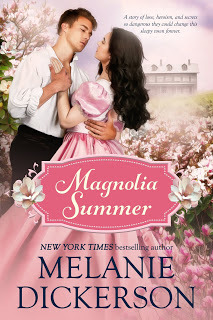 Magnolia Summer
Magnolia SummerFrom New York Times Bestselling author Melanie Dickerson comes a story of romance, heroism, and secret identity. Will this Deep South Zorro succeed in saving his sleepy Southern town?
Truett Beverly returned to Bethel Springs, Alabama, after finishing medical school. Fighting a secret war with a corrupt lawman wasn’t in his plans, but when Sheriff Suggs threatens his childhood friend, Truett dons a cape and hood and becomes the Hooded Horseman, placing him squarely in the sheriff’s crosshairs.
Celia Wilcox arrives in Bethel Springs in June of 1880. She’s come from Nashville to help her sister care for their younger siblings. She hopes only to be on the small farm for the summer, just until her mother recovers from the shock of Celia’s father’s death. She must return to Nashville in order to fulfill her dream of opening her own dress shop.
Celia catches Truett’s eye from the moment she steps off the train. He finds himself wanting to impress her, but she flatly refuses to flirt with him or to fall for his—if he does say so himself—considerable charm. Truth is, Celia’s attraction to Dr. Truett Beverly terrifies her. What will happen when Sheriff Suggs discovers Truett is the Hooded Horseman? Will Celia's greatest fears come true? Or will she be able to prevent the sheriff from carrying out one last lynching?
Published on September 19, 2018 04:05
September 17, 2018
Jesus Rejoiced
 Ta'Mara Hanscom
21In that same hour He rejoiced in the Holy Spirit…Luke 10:21a ESV
Ta'Mara Hanscom
21In that same hour He rejoiced in the Holy Spirit…Luke 10:21a ESVI’ve read my Bible so many times over the last thirty-some years that I’ve lost track of how many. What’s remarkable in that is that I still see something brand new almost every day. For instance, the verse that I just read to you; I can honestly say that I don’t remember ever seeing that verse in my Bible before. And when I saw it the other day, it stopped me in my tracks.Jesus rejoiced…
The story surrounding that verse goes like this: 17 The seventy-two returned with joy, saying, “Lord, even the demons are subject to us in your name!” 18 And he said to them, “I saw Satan fall like lightning from heaven. 19 Behold, I have given you authority to tread on serpents and scorpions, and over all the power of the enemy, and nothing shall hurt you. 20 Nevertheless, do not rejoice in this, that the spirits are subject to you, but rejoice that your names are written in heaven.”Luke 10:17-24 ESV
Seventy-Two of Jesus’ disciples had just returned from performing miracles in His Name, and they were excited about that – perhaps even bragging a little bit! But Jesus lovingly admonishes them, i.e., Guys, don’t get so puffed up about this! I saw Satan’s fall from glory because of the same problem.
And it can happen to anybody.
There’s a great story about a successful, godly king in our Old Testament. His name was Uzziah, and he could do anything. He had an impeccable talent for industrialism, he was gifted in agriculture, and he had a hard-wired sense for national defense. But you know what did him in? Pride. When he’d developed his country to a superior point, he started to rewrite God’s perfect rules about worship. God struck Uzziah with leprosy and he was never permitted to be in His presence again.
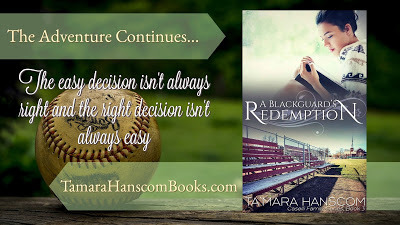 Click to buy 'A Blackguard's Redemption' by Ta'Mara Hanscom
Click to buy 'A Blackguard's Redemption' by Ta'Mara HanscomI think that Jesus’ seventy-two, having been revealed the glorious treasures of God’s Word, were caught up in the pride of accomplishment—not unlike King Uzziah. God gives us our gifts and talents, and we are to utilize them for Kingdom service and edification of the Body. They’re not intended for our personal glory.
Jesus told His disciples not to rejoice in the fact that they could overcome Satan and his minions with just His Holy Name. But, rather, that their names were written in heaven.
And it’s right there that Jesus rejoiced!
 Jesus was delighted for the seventy-two, just as He is for each and every one of us who have our names written in heaven. In another passage, Jesus declared, “10 … I tell you, there is joy before the angels of God over one sinner who repents.” Luke 15:10 ESV…before the angels of God…
Jesus was delighted for the seventy-two, just as He is for each and every one of us who have our names written in heaven. In another passage, Jesus declared, “10 … I tell you, there is joy before the angels of God over one sinner who repents.” Luke 15:10 ESV…before the angels of God…Jesus is before the angels of God. He is Commander of the heavenly host. He is filled with joy and He rejoices when even just one of us turns to Him in faith and repents of our sin.
“Blessed are the eyes that see what you see! 24 For I tell you that many prophets and kings desired to see what you see, and did not see it, and to hear what you hear, and did not hear it.” Luke 10:23-24 ESV
We are blessed when we uncover the mystery of God through Jesus Christ. People a whole lot smarter, and in much higher position, study and wait for years for the revelations Jesus just lavishes on His people. We need only faith to stand in His grace.
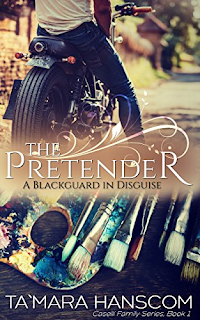 Click to BuyIn faith, turn to our gracious Savior today! Repent of your sin and live a new life in Him. I guarantee, He will rejoice over you!
Click to BuyIn faith, turn to our gracious Savior today! Repent of your sin and live a new life in Him. I guarantee, He will rejoice over you!17 The Lord your God is in your midst,
a mighty one who will save;
he will rejoice over you with gladness;
he will quiet you by his love;
he will exult over you with loud singing. Zephaniah 3:17 ESVHallelujah, what a Savior!© 2018 Ta`Mara Hanscom
Leave a comment to get your name in a drawing for an ebook copy of book #1 of the Caselli Family Series, The Pretender - A Blackguard in Disguise by Ta'Mara Hanscom
~~~~~ A Blackguard's Redemption A Blackguard s Redemption is the third volume of 5 in the epic romance series The Caselli Family Series.
Eleven years have passed since Noah and Tillie s chance meeting. Tillie is married to Alex Martin, III. Noah has been a widower for the past five years, and has grown terribly lonely.
Giuseppe and Rosa conspired, along with their daughter-in-law, Tara, to keep Noah s identity a secret...but little did they know that Noah himself would reveal their deceptions to an unsuspecting Angel.
As Alex relocates his family to Rapid City, SD, Noah s heart returns to the desire of a love he s never forgotten. And while Alex grows in the limelight of politics, Angel s heart softens to another man.
When tragedy strikes the Martins, Alex abandons his wife and children in their greatest hour of need. Giuseppe watches his planned marriage unravel and confesses his deceit to Noah.
Caught between a workaholic husband and a charming old flame, Tillie is torn between righteousness and desire. ~~~
Fiction to Ignite Your Faith
Ta`Mara Hanscom was born and raised in South Dakota. She has lived in Sioux Falls, Tea, and Rapid City, the primary location of her fictional series, The Caselli Family Series. Ta`Mara is a dedicated Bible scholar, specializing in the Old Testament which she has taught at her home church. She also teaches AWANA Sparks and speaks at women’s events.She works full time on her writing and Bible lessons in northwest Iowa, where she currently resides with her husband Jim. She has three grown children and one grandson, two rescued cats and one Pomeranian.
Ta'Mara's Website Ta'Mara on Twitter Ta'Mara on Facebook
Published on September 17, 2018 21:00
September 16, 2018
The Birth of a Series: The Amish of Weaver's Creek
 Order Here!
Order Here!by Jan Drexler
My next book releases tomorrow, September 18, and I’m busy working on the second book in the series, so I thought we’d talk a bit about how this series came about.
This post isn’t a lesson on how to write a series – it’s a narrative about how your series could be written.
We’ll start at the very beginning (a very good place to start!)
Two years ago this week, I was at ACFW 2016 in Nashville. Maybe I met some of you there! One of the things I enjoyed was a breakfast meeting with my editor from Revell, Vicki Crumpton, and Michelle Misiak and Hannah Brinks from Baker’s marketing department (Revell and Bethany House are both part of Baker Publishing.) We discussed my current series at the time (The Journey to Pleasant Prairie) and bounced around some ideas of what my next series might be.
From that meeting, I had an inkling of what this next series should be…but that was just the beginning of my work. I had a lot of research to do before I could think about submitting a proposal.
I knew this series would be about the Amish, and I knew it would be historical, so I started reading through my research materials. I found a book called “Mennonites, Amish, and the American Civil War” by Lehman and Nolt, and I knew I had my time period. As I continued my research, I discovered that there were Amish who fought in the war – very few – but that fact was the nugget. The series was born.
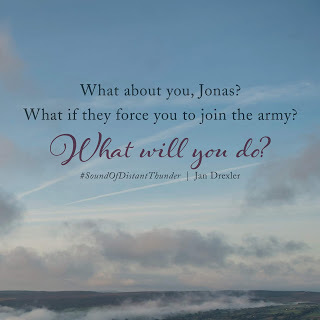
I created a place – Weaver’s Creek in southern Holmes County, Ohio. Then I created a family – the Weavers. I gave the family members names. Abraham and Lydia are the parents, and they have six children (four of them married) and nine grandchildren. Then I started thinking about which family members would be the main characters for the three books in the series.
Wait a minute…back up. At the same time as I was creating this family and their neighbors, I was thinking about the scope of the war, the setting (central Ohio), the political climate of the time, and the coming schism in the Amish church. All of those things also needed to be included in this series.
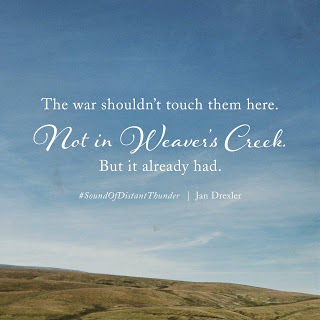
Let’s think about what a series is:
It’s a group of books, each telling an individual story within a larger story arc. The series might consist of many books (like the House of Winslow series by Gilbert Morris which has forty titles!), or only a few. Most series published now are three or four books long, although with indy publishing, a series can be as long as an author and readers wish it to be.
The larger story arc for The Amish of Weaver’s Creek is the Civil War. The first book starts in the spring of 1862, when the war is a year old, and I think the third book will end around 1866, a year after the surrender at Appomattox.
Once I had developed my time line, I found three major historical events that would serve as the background for each of the three books in the series. Then I determined who the lead characters would be. Finally, I created a brief synopsis for each of the books.

My proposal was ready. I submitted it through my agent. My editor liked it (yay!), and she took it to the publication committee. They approved it (yay again!) and offered me a contract (big yay!)
Now I really had to get to work. The first book is done and ready for readers, but the second book in the series is due October 1st, and the third book is due in October 2019. It is work, and it gets pretty hairy sometimes (especially this close to a deadline!) but it is always wonderfully rewarding.
This is my dream job, and I am always, always, grateful. I am enjoying an embarrassment of riches!

Now, let's talk!
Do you read series?
Do you like series that revolve around one character and one story, or a series that has a distinct story for each book but are related through the setting and characters?
Have you ever attempted to write a series? Do you think you ever will?
One commenter will win a copy of “The Sound of Distant Thunder,” the first in The Amish of Weaver’s Creek series.
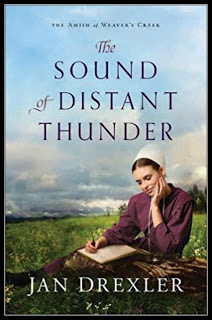 Order Here!Katie Stuckey and Jonas Weaver are both romantics. Seventeen-year-old Katie is starry-eyed, in love with the idea of being in love, and does not want to wait to marry Jonas until she is eighteen, despite her parents' insistence. So much can happen in a year. Twenty-year-old Jonas is taken in by the romance of soldiering, especially in defense of anti-slavery, even though he knows war is at odds with the teachings of the church. When his married brother's name comes up in the draft list, he volunteers to take his brother's place. But can the commitment Katie and Jonas have made to each other survive the separation?
Order Here!Katie Stuckey and Jonas Weaver are both romantics. Seventeen-year-old Katie is starry-eyed, in love with the idea of being in love, and does not want to wait to marry Jonas until she is eighteen, despite her parents' insistence. So much can happen in a year. Twenty-year-old Jonas is taken in by the romance of soldiering, especially in defense of anti-slavery, even though he knows war is at odds with the teachings of the church. When his married brother's name comes up in the draft list, he volunteers to take his brother's place. But can the commitment Katie and Jonas have made to each other survive the separation?From the talented pen of Jan Drexler comes this brand new Amish series set against the backdrop of the Civil War. She puts her characters to the test as they struggle to reconcile their convictions and desires while the national conflict threatens to undermine and engulf their community.
Published on September 16, 2018 21:00
September 14, 2018
Weekend Edition

If you are not familiar with our giveaway rules, take a minute to read them here. It keeps us all happy! All winners should send their name, address, and phone number to claim prizes. Note our new email address and please send your emails to Seekerville2@gmail.com

From Weekend Edition the winners of Ruthy's "Catch of the Day" are Wilani Wahl and Jackie Smith! Congratulations, ladies... Hoping to do a mailing this week, so send your info in, pretty please!
Monday: McCall Hoyle shared a wonderful day with us talking about "Charting Your Path to Success--One Step at a Time" and celebrating her new release, Meet the Sky!
Tuesday: Melanie Dobson shared with us about her research process. The winner of a copy of her latest historical, Hidden Among the Stars, is Pat Jeanne Davis. Congrats!
Wednesday: Ruthy was in the house on Wednesday, talking about reality fiction and taking editing seriously... two things she thinks are fairly important for authors! :) Winner of "At Home in Wishing Bridge" is Jenna Night! Congratulations, Jenna!
Friday: Annie shared The Things We (Readers) Say! Check out the post and see how many phrases lurk in your vocabulary. Winner of a lovely "I Read Past My Bedtime" pin is Laura W.

Monday: Jan Drexler has a new release and a new series. Come along as she takes you on her journey of the Birth of a Series! She's giving away a copy of "The Sound of Distant Thunder," the first book in The Amish of Weaver's Creek.
Tuesday: Ta'Mara Hanscom is coming to visit and talk about REJOICING. Ta'Mara is giving away an ebook copy of book #1 of her Caselli Family series The Pretender--A Blackguard in Disguise.
Wednesday: Melanie Dickerson will share some insights on plotting, since she often gets asked about that from budding writers. Come and leave a comment for a chance to win a copy of her Southern Historical Romance, Magnolia Summer. Friday: Winnie Griggs will be discussing Secondary Characters:The Good, The Bad and The Quirky


Missy Tippens is thrilled to be included in this newly-released collection, Second-Chance Dogs ! Missy's story, "It Started with a Guinea Pig" is about when she and her kids went to buy a guinea pig on a day that happened to be pet adoption day, and ended up taking home a puppy instead. Don't miss these beautiful stories about the dogs in our lives!
You can check it out by clicking here.

Seeker Glynna Kaye is sharing the spotlight with New York Times Bestselling Author Lenora Worth in a Love Inspired 2-in-1 Western Collection!
"Second Chance Courtship" was Glynna's second published book (2011) set in mountain country Arizona (following "Dreaming of Home"). She's delighted that readers will get a "second chance" if they missed Kara Dixon and cowboy Trey Kenton's reunion story the first time around!
It's on the Walmart and other retailer book shelves right now!!
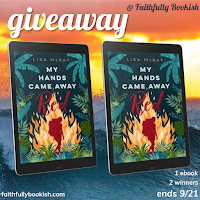 Beth has been busy moving her site over to a new host but everything is finally in place and better than before! She's looking forward to all the spare time she expects to have since nothing will need to be fixed ever again! (Let her live in her delusions for a little while, they are a comforting, happy place.)
Beth has been busy moving her site over to a new host but everything is finally in place and better than before! She's looking forward to all the spare time she expects to have since nothing will need to be fixed ever again! (Let her live in her delusions for a little while, they are a comforting, happy place.)Sign up for automatic email updates and check out current giveaways on Faithfully Bookish like the rereleased My Hands Came Away Red by Lisa McKay. Don't you love the new cover?!
Jan Drexler's newest book is releasing on Tuesday, September 18th!
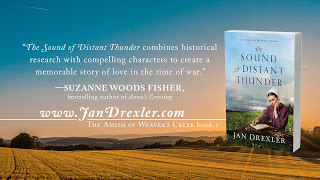
SALE SALE SALE SALE SALE SALE!!!To promote the release of The Reluctant Warrior, there is an ebook sale for book #1 in the High Sierra Sweethearts Series, The Accidental Guardian.
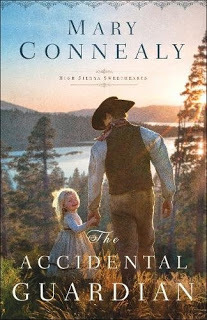 Right now on Amazon, the Kindle ebook is $1.99And on Barnes and Noble, in NOOK format it is $1.99
Right now on Amazon, the Kindle ebook is $1.99And on Barnes and Noble, in NOOK format it is $1.99 
Steve Laube on "Rumbles in the CBA"... Christian Booksellers Association purging executives.
ebook Pricing Strategies to Sell More Books and Maximize Author Earnings by Chloe at Written Word Media
New Tax Law Gives Authors a 20% Tax Break. Read the New York Times article.
How to Write a Synopsis in 4 Easy Steps at the Reedsy Blog
5 Unconventional Book Launch Ideas from Professional Marketers by guest Ricardo Fayet at the BookBub blog
Sexual Harassment Uncovered at Christian Writers Conferences from Publisher's Weekly
The Chunky Method by Allie Pleiter at My Story, My Way - An Indie Adventure
Published on September 14, 2018 21:00
September 13, 2018
The Things We (Readers) Say!

Hi! Annie here, back at Seekerville for a bit of fun. I want to talk about all the things we readers and book lovers love to say! You see, I honestly think with all the reading we do, we’re a smart bunch. Don’t you agree?
One of my all time favorites, is “Go away, I’m reading.” It really does make me smile, and something that makes my Darcy snicker a bit. I haven’t yet found an item to bear those words that is just the right balance of seriousness and lighthearted fun. I did find an eye mask that perfectly and eloquently says “Go away, I’m sleeping.”
Published on September 13, 2018 21:00
September 11, 2018
The Serious Side of Reality Fiction
Reality Fiction... What is it? Isn't most fiction based on reality?
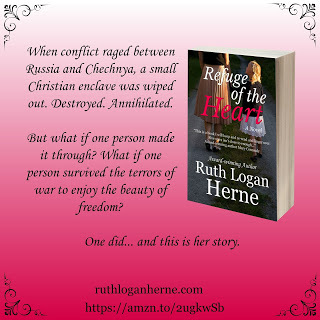 Kind of. With exceptions.
Kind of. With exceptions.
Anyone who is married to a male of the species knows that fictional heroes might make a few gaffes, but they always come through in the end with the appropriate groveling, grinning, gut-wrenching smile that wins our hearts... and makes us love romance.
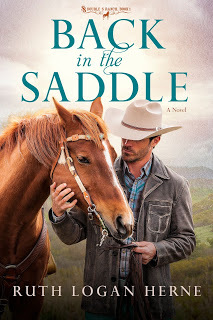
In real life that might come through as a grunt. At least around here, grunts tend to outnumber gut-wrenching smiles. Please DO NOT tell me if your reality is different. Let me live in my obscure view of reality.
So what makes "reality" fiction different?
It goes deeper. It taps into the poignancy of the moment with a punch. It deals with the dark sides of life and sheds light and faith on them... and healing.
Or it simply goes all mainstream literature and leaves you wondering if life is worth living... But I love my happy endings. I love hope and no matter how bad reality is, hope springs forth.
Hi, I'm Ruthy and I love writing reality fiction. And with almost two million books sold, it seems readers like it, too.... But this blog isn't about me. I know my strengths. I work to polish my weaknesses, and they are many.... Here are a few flaws that editors help me on all the time:
Repetitive phrases
Ascribing the same catchy words to more than one person
Messed up timelines
Not enough romance
Too much romance
Too much time on secondary characters in short books
So you'd think I'd learn that these are my weaknesses, and I know it... and I try to slice and dice and deliver a clean product. But writers aren't perfect and that's why an editor is a marvelous and very necessary thing.... It's okay if you don't think so. I know writers who offer their work up after a beta reader gives them the thumb up emoji.
That's them.
I want the polish. I want my indie fiction as strong as my traditional fiction. And I've worked with great editors from half-a-dozen publishing houses. I've learned so much from them... But not so much that I trust my work raw or with readers because an editor looks closer. Deeper. I use Beth Jamison of Jamison Editing for my indie work. We make a good team. She's reasonable, quick and good at her job.
The reason I'm going into all of that is because when you're writing reality fiction... A term that our friend Vince used years ago in a book review... fiction that's going to jump into tough subjects, you need to take it and your work seriously. I once read the opening of a book that dealt with a grave disaster... a disaster that killed thousands of people in its path, including people the protagonist saw EVERY DAY.... and it got a mere mention. As if the protagonist was too caught up in her life to be blindsided by the disaster.
Instantly I knew this person had never been through a storm of that proportion... I knew they were focusing on the internal struggle of the character and ignoring the HUGE, MONSTER STORM raging outside the door, leaving havoc and death in its path.
A storm that killed so many people and left thousands homeless deserved better because the aftermath of the storm is just as devastating and life-changing as whatever was going on in that poor girl's head. It was painfully clear that this person either didn't think the MONSTER STORM was of any consequence (and it was of huge consequence to the entire story) or they rushed their work (a common problem with indie authors) and/or they didn't think an editor's advice was worth it (Disagree.....) or they ignored the editor's advice and published as is.
And yes, I know people who've done that.
Reality fiction might deal with hard-hitting subjects... Sex. Divorce. Death. Abuse. Crime. Mental Illness. As an author you need to know how much to say... and when to say it.
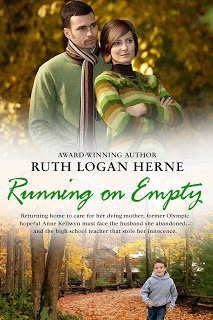 Over 300 reviews and a 4.7 rating. An unforgettable story that had to be told.
Over 300 reviews and a 4.7 rating. An unforgettable story that had to be told.
http://amzn.to/1GwgOWL
Do you keep the reader in suspense?
Sometimes.
Do you start out with a full confession?
Sometimes.
And those variances are crucial to your story development. And remember that circumstances (like that monster storm) are a big part not only of your setting, but your character's character. What kind of character isn't gobsmacked by a horrific event? A shallow one.
If you're keeping the reader guessing, then subtle hints or over-the-top reactions help set the stage. An over-zealous reaction to a stranger's child pitching a fit in a store might have its roots in a past trauma. A lost child. An abused childhood. Inability to have a child.
When you tackle deep subjects, don't skim. Don't dwell. Walk the tightrope, keep your balance and don't be afraid to edit. Edit. Edit. And trust and editor and cut things when they hit you over the head with virtual white-out and say "enough already, darling. Move on."
The same holds true if you're writing diverse fiction, fiction with characters that aren't a carbon copy of you. If it's not an issue, don't make it one. (Corrie in "Her Cowboy Reunion", a sacrificial black surrogate mother to three white Steel Magnolias who raised them from infancy and stayed the course)...

But if it IS an issue, handle with care. (Kerry and Ben in The First Gift, when his mother disapproves their relationship)
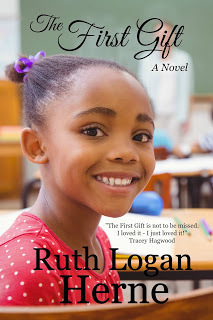 Whatever you're writing... or any other job you're doing! Give it your best. The best waitress, the best cashier, the best retail clerk, the best executive assistant, the best mechanic.
Whatever you're writing... or any other job you're doing! Give it your best. The best waitress, the best cashier, the best retail clerk, the best executive assistant, the best mechanic.
The best writer you can be.
Wanna talk?
I've got a copy of the much awaited (SQUEAL IS REAL!!!!) "At Home in Wishing Bridge", book two of the Wishing Bridge series and it's going out to one of you!
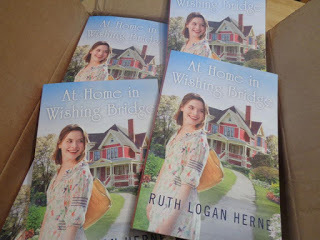 Thea never expected to find herself in a small rural town where wishes and prayers mix with hopes and dreams... but here she is. And even more surprising? She might be falling in love... with the town... and maybe with the kind of geeky, grumpy doctor running the needy practice. But he's got plans and dreams of his own and none of them include Wishing Bridge. Yet.
Thea never expected to find herself in a small rural town where wishes and prayers mix with hopes and dreams... but here she is. And even more surprising? She might be falling in love... with the town... and maybe with the kind of geeky, grumpy doctor running the needy practice. But he's got plans and dreams of his own and none of them include Wishing Bridge. Yet.
Leave a comment or jump into the discussion... Agree? Or disagree?
I'm open to both!
 Multi-published, award-winning author Ruth Logan Herne absolutely positively loves what she does and loves chatting with readers and writers. Author of over 40 novels and novellas, she's living her dream... when she's not picking up after cute kids, tiny kittens, a couple of dogs, two mini-donkeys, a flock of too many chickens, and one aging farmer. Email her at loganherne@gmail.com, visit her website ruthloganherne.com or follow her on Twitter @RuthLoganHerne.
Multi-published, award-winning author Ruth Logan Herne absolutely positively loves what she does and loves chatting with readers and writers. Author of over 40 novels and novellas, she's living her dream... when she's not picking up after cute kids, tiny kittens, a couple of dogs, two mini-donkeys, a flock of too many chickens, and one aging farmer. Email her at loganherne@gmail.com, visit her website ruthloganherne.com or follow her on Twitter @RuthLoganHerne.
 Kind of. With exceptions.
Kind of. With exceptions.Anyone who is married to a male of the species knows that fictional heroes might make a few gaffes, but they always come through in the end with the appropriate groveling, grinning, gut-wrenching smile that wins our hearts... and makes us love romance.

In real life that might come through as a grunt. At least around here, grunts tend to outnumber gut-wrenching smiles. Please DO NOT tell me if your reality is different. Let me live in my obscure view of reality.
So what makes "reality" fiction different?
It goes deeper. It taps into the poignancy of the moment with a punch. It deals with the dark sides of life and sheds light and faith on them... and healing.
Or it simply goes all mainstream literature and leaves you wondering if life is worth living... But I love my happy endings. I love hope and no matter how bad reality is, hope springs forth.
Hi, I'm Ruthy and I love writing reality fiction. And with almost two million books sold, it seems readers like it, too.... But this blog isn't about me. I know my strengths. I work to polish my weaknesses, and they are many.... Here are a few flaws that editors help me on all the time:
Repetitive phrases
Ascribing the same catchy words to more than one person
Messed up timelines
Not enough romance
Too much romance
Too much time on secondary characters in short books
So you'd think I'd learn that these are my weaknesses, and I know it... and I try to slice and dice and deliver a clean product. But writers aren't perfect and that's why an editor is a marvelous and very necessary thing.... It's okay if you don't think so. I know writers who offer their work up after a beta reader gives them the thumb up emoji.
That's them.
I want the polish. I want my indie fiction as strong as my traditional fiction. And I've worked with great editors from half-a-dozen publishing houses. I've learned so much from them... But not so much that I trust my work raw or with readers because an editor looks closer. Deeper. I use Beth Jamison of Jamison Editing for my indie work. We make a good team. She's reasonable, quick and good at her job.
The reason I'm going into all of that is because when you're writing reality fiction... A term that our friend Vince used years ago in a book review... fiction that's going to jump into tough subjects, you need to take it and your work seriously. I once read the opening of a book that dealt with a grave disaster... a disaster that killed thousands of people in its path, including people the protagonist saw EVERY DAY.... and it got a mere mention. As if the protagonist was too caught up in her life to be blindsided by the disaster.
Instantly I knew this person had never been through a storm of that proportion... I knew they were focusing on the internal struggle of the character and ignoring the HUGE, MONSTER STORM raging outside the door, leaving havoc and death in its path.
A storm that killed so many people and left thousands homeless deserved better because the aftermath of the storm is just as devastating and life-changing as whatever was going on in that poor girl's head. It was painfully clear that this person either didn't think the MONSTER STORM was of any consequence (and it was of huge consequence to the entire story) or they rushed their work (a common problem with indie authors) and/or they didn't think an editor's advice was worth it (Disagree.....) or they ignored the editor's advice and published as is.
And yes, I know people who've done that.
Reality fiction might deal with hard-hitting subjects... Sex. Divorce. Death. Abuse. Crime. Mental Illness. As an author you need to know how much to say... and when to say it.
 Over 300 reviews and a 4.7 rating. An unforgettable story that had to be told.
Over 300 reviews and a 4.7 rating. An unforgettable story that had to be told. http://amzn.to/1GwgOWL
Do you keep the reader in suspense?
Sometimes.
Do you start out with a full confession?
Sometimes.
And those variances are crucial to your story development. And remember that circumstances (like that monster storm) are a big part not only of your setting, but your character's character. What kind of character isn't gobsmacked by a horrific event? A shallow one.
If you're keeping the reader guessing, then subtle hints or over-the-top reactions help set the stage. An over-zealous reaction to a stranger's child pitching a fit in a store might have its roots in a past trauma. A lost child. An abused childhood. Inability to have a child.
When you tackle deep subjects, don't skim. Don't dwell. Walk the tightrope, keep your balance and don't be afraid to edit. Edit. Edit. And trust and editor and cut things when they hit you over the head with virtual white-out and say "enough already, darling. Move on."
The same holds true if you're writing diverse fiction, fiction with characters that aren't a carbon copy of you. If it's not an issue, don't make it one. (Corrie in "Her Cowboy Reunion", a sacrificial black surrogate mother to three white Steel Magnolias who raised them from infancy and stayed the course)...

But if it IS an issue, handle with care. (Kerry and Ben in The First Gift, when his mother disapproves their relationship)
 Whatever you're writing... or any other job you're doing! Give it your best. The best waitress, the best cashier, the best retail clerk, the best executive assistant, the best mechanic.
Whatever you're writing... or any other job you're doing! Give it your best. The best waitress, the best cashier, the best retail clerk, the best executive assistant, the best mechanic.The best writer you can be.
Wanna talk?
I've got a copy of the much awaited (SQUEAL IS REAL!!!!) "At Home in Wishing Bridge", book two of the Wishing Bridge series and it's going out to one of you!
 Thea never expected to find herself in a small rural town where wishes and prayers mix with hopes and dreams... but here she is. And even more surprising? She might be falling in love... with the town... and maybe with the kind of geeky, grumpy doctor running the needy practice. But he's got plans and dreams of his own and none of them include Wishing Bridge. Yet.
Thea never expected to find herself in a small rural town where wishes and prayers mix with hopes and dreams... but here she is. And even more surprising? She might be falling in love... with the town... and maybe with the kind of geeky, grumpy doctor running the needy practice. But he's got plans and dreams of his own and none of them include Wishing Bridge. Yet.Leave a comment or jump into the discussion... Agree? Or disagree?
I'm open to both!
 Multi-published, award-winning author Ruth Logan Herne absolutely positively loves what she does and loves chatting with readers and writers. Author of over 40 novels and novellas, she's living her dream... when she's not picking up after cute kids, tiny kittens, a couple of dogs, two mini-donkeys, a flock of too many chickens, and one aging farmer. Email her at loganherne@gmail.com, visit her website ruthloganherne.com or follow her on Twitter @RuthLoganHerne.
Multi-published, award-winning author Ruth Logan Herne absolutely positively loves what she does and loves chatting with readers and writers. Author of over 40 novels and novellas, she's living her dream... when she's not picking up after cute kids, tiny kittens, a couple of dogs, two mini-donkeys, a flock of too many chickens, and one aging farmer. Email her at loganherne@gmail.com, visit her website ruthloganherne.com or follow her on Twitter @RuthLoganHerne.
Published on September 11, 2018 21:01



